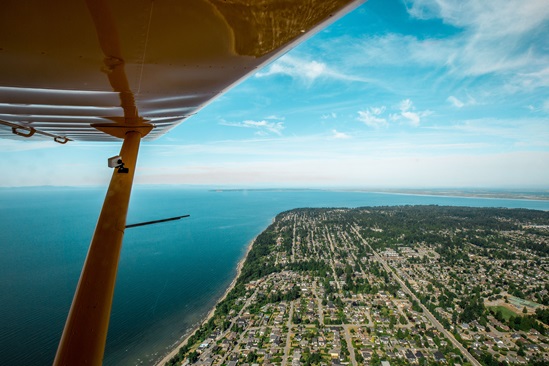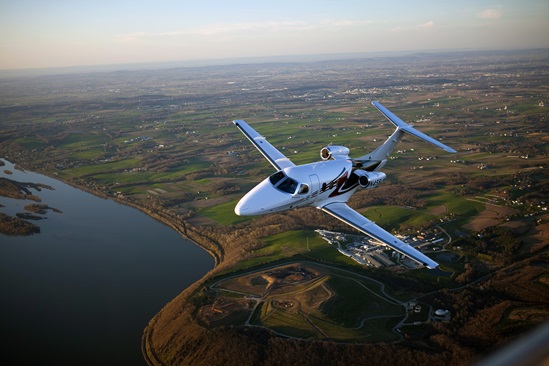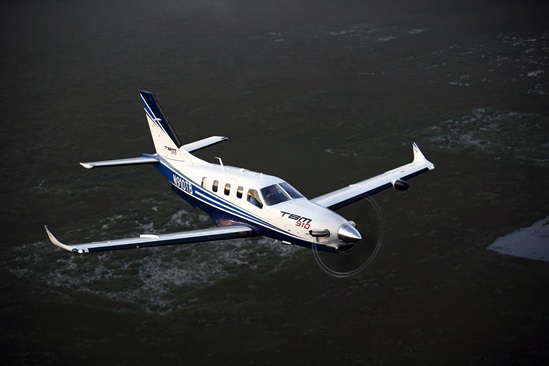An eventful year for drones
If it seems like drones are just about everywhere these days, there’s something to that. As another record year for drone sales—and a year that saw several significant developments in technology and regulation—drew to a close, a newly published Pew Research Center study found an American public more willing to accept the proliferation than some might think, though skeptical views persist.
The Pew study was published Dec. 19, with findings that suggest drone ownership is far more widespread than drone registration data (and many sales estimates): 8 percent of the 4,135 people who responded to the Pew survey in May reported owning a drone. Multiply that number by the estimated population of the United States (about 323 million in 2016), and you get 25 million drone owners.
Just how many drones are actually out there is difficult to pin down.
Skylogic Research CEO Colin Snow published a drone market report in September that was based on analysis of available data along with Snow’s own survey of 2,600 drone buyers, service providers, and others in the industry. Snow, in a blog posted Dec. 19 reflecting on the trends of 2017, calculates that total U.S. drone sales for the year will amount to 3.3 million units, a 36-percent increase over 2016. That includes about 2 million small drones typically sold and used as toys, weighing less than 250 grams, and 1.3 million that are above that threshold. These are the drones that owners must register with the FAA, a requirement reinstated by a new federal law enacted in December, following a federal court ruling in May (Taylor v. Huerta) that struck down the FAA registration requirement for people who fly drones for recreation. The ruling was made on the basis of 2012 FAA Modernization and Reform Act restrictions on FAA regulation of model aircraft flown under Part 101.
As of Oct. 31, Snow reports, 837,000 recreational drone users had registered, and another 107,000 drones had been registered for flights under Part 107. (Recreational user registration can cover any number of drones flown by an individual operator, while drones flown for commercial operation under Part 107 are individually registered.) With recreational users again required to register, it’s reasonable to expect an uptick.
The Pew survey also found many in the public have reservations about drones, though most are curious, at least, and relatively few respondents indicated potential interactions such as a drone flying near their home would provoke anger or fear. About half (54 percent) think drones should not be allowed to fly near private homes; another 34 percent told the survey team that it depends on circumstances. Respondents were more accepting of flying drones in public parks, with 44 percent opining that it should be allowed, 25 percent against, and 31 percent saying that it depends on circumstances.
“Still, a significant number of Americans do not have hard and fast rules about whether people should be able to fly drones in various locations,” Pew researcher Paul Hitlin wrote in the online publication of the survey report. “For each of the possible locations for drone use asked about in the survey, roughly one-quarter to one-third of Americans say it depends on the circumstances as to whether citizens should be allowed to pilot drones in that location or not.”
Public perception may have improved since. The Pew study was conducted before a busy hurricane season and devastating wildfires in California saw drones take on new importance and a higher public profile in emergency response and disaster relief.

Drones in the storm
The FAA surprised a few people with the speedy approval of drone operations in Texas and Florida to support damage assessment and relief efforts following the landfall of Hurricanes Harvey and Irma, and FAA Administrator Michael Huerta opined at the time that the unmanned aircraft response “will be looked back upon as a landmark in the evolution of drone usage in this country.”
AOPA Director of Regulatory Affairs Justin Barkowski, who is among the AOPA staff working closely with the FAA and other stakeholders toward a shared goal of safe integration of drones, said that the response by trained, professional drone pilots working with public agencies and utility companies stands out among the most important moments of the year for small, unmanned aircraft and their proponents.
“It was pretty eye-opening for the FAA on how quickly they could process the authorizations while ensuring the safety of the operations,” Barkowski said.
Speeding the authorization of non-emergency Part 107 (commercial) drone operations in controlled airspace was another major development of 2017 that promises to ease one of the biggest headwinds faced by drone pilots and clients. The FAA put the Low Altitude Authorization and Notification Capability (LAANC, pronounced “lance”) on the fast track, and began implementing the capability at a small but growing list of airports.
Collision concern
Another seminal moment in the history of the drone arrived Sept. 21, when a DJI Phantom 4 collided with a U.S. Army Black Hawk helicopter that was on security patrol over New York Harbor during the United Nations General Assembly. A piece of the Phantom wound up inside the helicopter, which made a successful emergency landing with relatively minor damage to the main rotor, and that piece allowed the NTSB to track down the owner. The agency’s final report faulted the drone pilot for flying the Phantom far beyond the pilot’s line of sight (to a maximum distance of about 2.5 miles). It also provided an object lesson in the importance of another FAA regulatory effort, establishing a capability to remotely track and identify drones. An FAA rulemaking committee formed to study the issue of remote tracking and identification failed to achieve unanimity, though there was consensus on the need to enable law enforcement and security personnel to remotely identify drones with some exceptions. That report was published Dec. 19.
The risks posed by drones began to come into focus as well, with a report published in April detailing the risks posed to persons on the ground if they’re struck by a falling drone, followed in November by another that detailed the findings of a study that used computer modeling to calculate the hazards posed to manned aircraft in a collision with a drone. Both of these studies were conducted by the FAA-funded Alliance for System Safety of UAS through Research Excellence (ASSURE), a collaboration that includes universities around the country tasked with studying the risks and providing data to the FAA to inform future regulatory efforts.
Efforts to enable advanced operations including flights beyond line of sight (a necessary element of facilitating drone delivery services envisioned by Amazon and others) advanced more slowly, though the U.S. Department of Transportation launched a pilot program Nov. 2, drawing an enthusiastic response from industry and government agencies across the country. The program will lead to small-scale trial runs of drone delivery and other advanced operations, conducted with FAA oversight by state, local, and tribal governments collaborating with manufacturers and operators.
“It’s a major step for the industry. This is a real program that’s going to produce critical data for policymakers,” said Barkowski. The pilot program will allow for controlled experiments and direct involvement by stakeholders at all levels, and stands to advance the safe integration of unmanned aircraft in a methodical, data-driven way without relinquishing federal control of the National Airspace System. “That’s why we’re encouraged.”
AOPA welcomed drone pilots
AOPA, the world’s largest aviation organization, welcomed drone pilots into its community of aviators in February, offering free and discounted training and education; discounts on products and events; legal representation; insurance; and a free, biweekly email newsletter, AOPA Drone Pilot.
"AOPA is in a unique situation to not only help bridge the gap between the manned and unmanned communities, but also provide the remote pilot population the needed resources, including education, safety outreach, networking opportunities, legal and pilot assistance, advocacy, and other member benefits,” said AOPA Senior Director of UAS Programs Kat Swain. “This is not something new to our organization, but an expansion of our efforts to serve and welcome newly certificated remote pilots into our community."
AOPA members all enjoy access to a range of product and service discounts, and thousands of members who previously joined as strictly manned aircraft pilots have opted to also receive information and updates tailored for drone pilots. (Members can easily edit their account and content preferences on the AOPA website any time by clicking on their name at the top of each page.)
AOPA was not alone among manned aviation groups seeking to bring in unmanned aircraft pilots, many (if not most) of whom have little or no prior experience with aviation. The Helicopter Association International 2017 Heli-Expo convention in March included drone-specific safety and training discussions. Participants recognized—and acted on—the need to promote a safety culture in unmanned aviation that parallels that of manned aviation.
Pilot supply outpaced demand
The rapid expansion of the unmanned aircraft fleet, and the swelling ranks of commercial operators with remote pilot certificates issued under Part 107 also had a downside. Snow, in his own year-end assessment, noted that the introduction of Part 107 in late 2016 had opened the door for many, and “the number of service providers currently outpaces demand, and as a result, service prices are coming down significantly.”
More specifically, Snow told AOPA Drone Pilot in September that the oversupply of pilots relative to demand has limited the income of Part 107 pilots. His survey found 85 percent of Part 107 pilots earn less than $50,000 a year flying drones, and 79 percent fly fewer than five operations per month.
Snow noted in a December follow-up interview that companies in the insurance, public utility, survey, and other industries that are embracing drones are largely training their existing staff for Part 107 certification, rather than outsourcing the service.
“Most companies are standing up their own pilots. They’d rather have somebody inside the company,” Snow said. While that is not universally true, it is a trend that may limit commercial opportunities for independent operators in the years to come.




